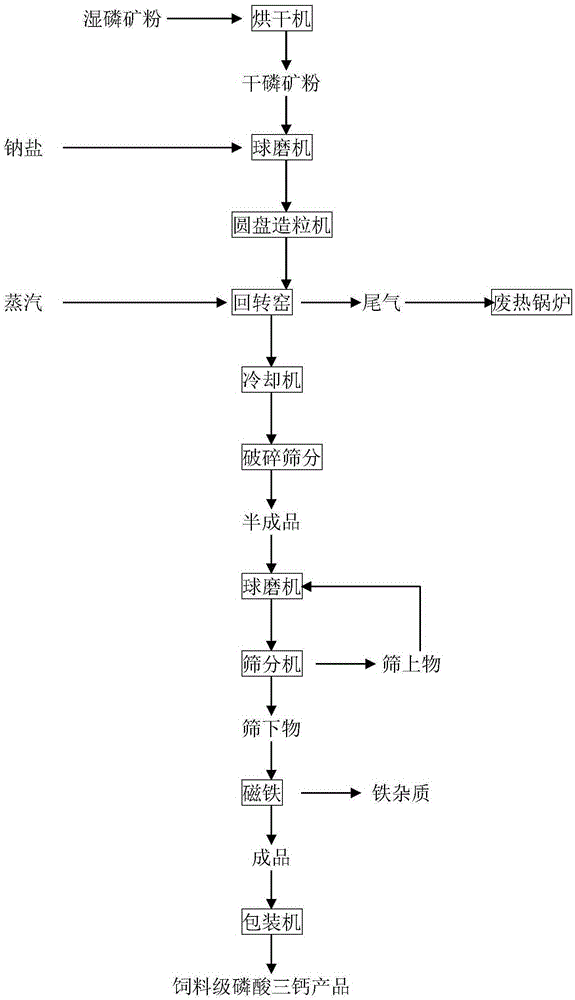Production method of feed-grade tricalcium phosphate
A production method and technology of tricalcium phosphate, applied in the field of phosphate, can solve the problems of relatively strict requirements for phosphate rock, unstable product quality and high product cost, and achieve the effects of reducing product quality fluctuation, difficult calcination and stable product quality.
- Summary
- Abstract
- Description
- Claims
- Application Information
AI Technical Summary
Problems solved by technology
Method used
Image
Examples
Embodiment
[0034] During production, the ingredients are counted as mass fraction: P 2 o 5 Content 15%~50%, CaO 30%~60%, MgO≤5%, SiO 2 ≤20%, Pb≤100×10 -6 、Cd≤100×10 -6 、As≤100×10 -6 , (Al 2 o 3 +Fe 2 O) ≤10.0%, with a moisture content of about 45%; the wet phosphate rock powder whose particle size is controlled to be ≤10mm is lifted by the bucket elevator, metered by the metering belt into the dryer, and countercurrent dried at a drying temperature of 900°C ; After drying, the moisture content of phosphate rock powder is controlled to be ≤5%. The dried phosphate rock powder and sodium salt composed of soda ash, Glauber's salt and sodium chloride are metered into the ball mill for mixing and ball milling according to the ratio requirements, and the powder obtained after mixing is sent to the granulator. Phosphoric acid is granulated at a ratio of 0.25:0.80:0.25; the granulated material is sent to the tail of the rotary calciner for preheating and calcination. The calcination tempe...
PUM
| Property | Measurement | Unit |
|---|---|---|
| particle size | aaaaa | aaaaa |
| particle size | aaaaa | aaaaa |
Abstract
Description
Claims
Application Information
 Login to View More
Login to View More - R&D
- Intellectual Property
- Life Sciences
- Materials
- Tech Scout
- Unparalleled Data Quality
- Higher Quality Content
- 60% Fewer Hallucinations
Browse by: Latest US Patents, China's latest patents, Technical Efficacy Thesaurus, Application Domain, Technology Topic, Popular Technical Reports.
© 2025 PatSnap. All rights reserved.Legal|Privacy policy|Modern Slavery Act Transparency Statement|Sitemap|About US| Contact US: help@patsnap.com

